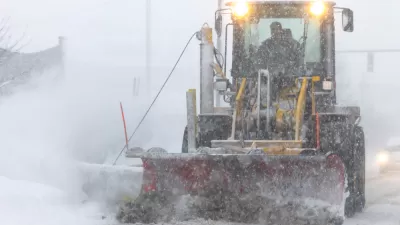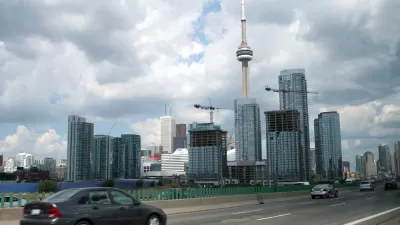A new zoning law in Toronto could enable its hundreds of suburban tower developments to become vibrant and active communities.

Cities all over the world need to take a close look at their suburbs. In many cases, low-density development correlates with a lack of transit and other infrastructure. Often, neighborhoods struggle to achieve the critical mass of human activity required for thriving small economies and healthy communities.
Many of Greater Toronto’s inner suburbs grapple with exactly these issues. But they are about to see dramatic change: a new zoning bylaw could mean that hundreds of neighborhoods go from being underused concrete deserts to vibrant communities, teeming with activity.
This creative approach to zoning provides an instructive case for urban areas in all parts of the globe.
The problem
Uniquely for a North American city, Toronto’s inner suburbs contain about two thousand towers. They currently house almost a million residents — about a sixth of the metropolitan area’s population. Until this point, zoning in these neighborhoods has made simple things like cafés, grocers, and community gardens illegal. This outmoded and highly restrictive policy has affected countless lives.
FULL STORY: How to rethink the suburbs: A lesson from Toronto

Alabama: Trump Terminates Settlements for Black Communities Harmed By Raw Sewage
Trump deemed the landmark civil rights agreement “illegal DEI and environmental justice policy.”

Study: Maui’s Plan to Convert Vacation Rentals to Long-Term Housing Could Cause Nearly $1 Billion Economic Loss
The plan would reduce visitor accommodation by 25% resulting in 1,900 jobs lost.

Why Should We Subsidize Public Transportation?
Many public transit agencies face financial stress due to rising costs, declining fare revenue, and declining subsidies. Transit advocates must provide a strong business case for increasing public transit funding.

Paris Bike Boom Leads to Steep Drop in Air Pollution
The French city’s air quality has improved dramatically in the past 20 years, coinciding with a growth in cycling.

Why Housing Costs More to Build in California Than in Texas
Hard costs like labor and materials combined with ‘soft’ costs such as permitting make building in the San Francisco Bay Area almost three times as costly as in Texas cities.

San Diego County Sees a Rise in Urban Coyotes
San Diego County experiences a rise in urban coyotes, as sightings become prevalent throughout its urban neighbourhoods and surrounding areas.
Urban Design for Planners 1: Software Tools
This six-course series explores essential urban design concepts using open source software and equips planners with the tools they need to participate fully in the urban design process.
Planning for Universal Design
Learn the tools for implementing Universal Design in planning regulations.
Smith Gee Studio
Alamo Area Metropolitan Planning Organization
City of Santa Clarita
Institute for Housing and Urban Development Studies (IHS)
City of Grandview
Harvard GSD Executive Education
Toledo-Lucas County Plan Commissions
Salt Lake City
NYU Wagner Graduate School of Public Service





























